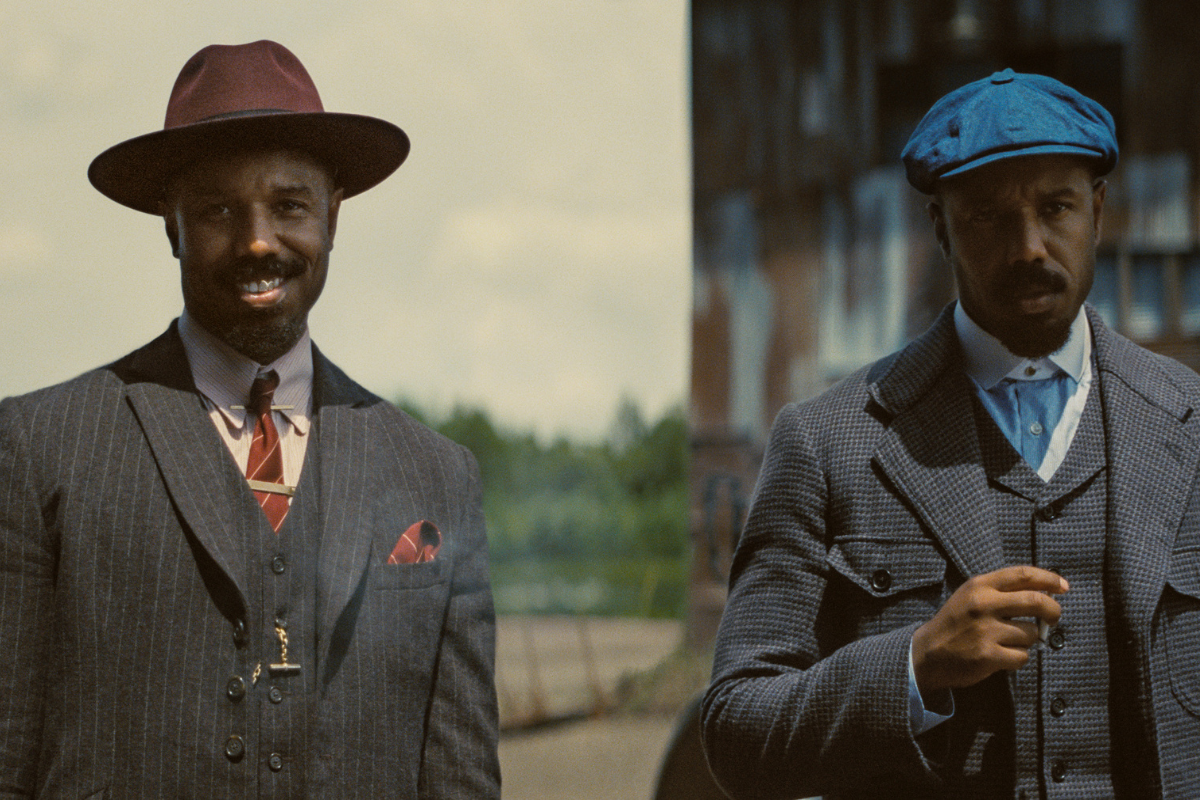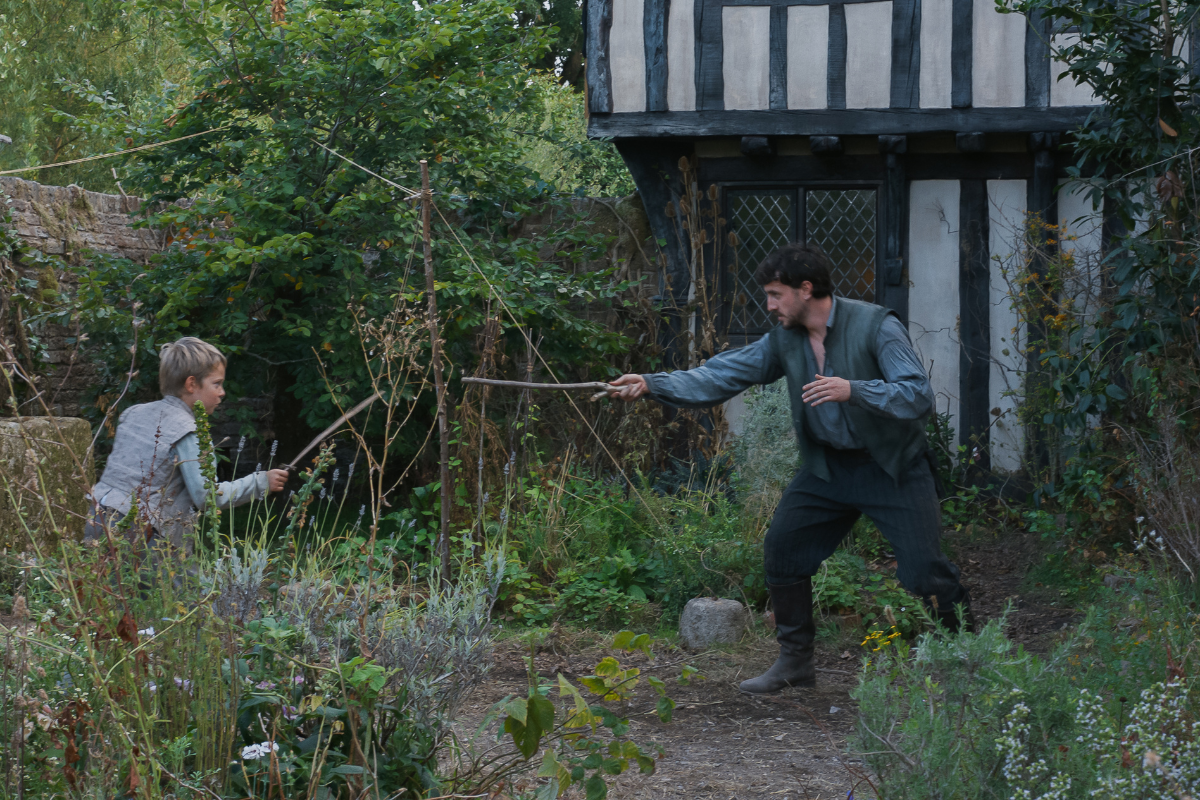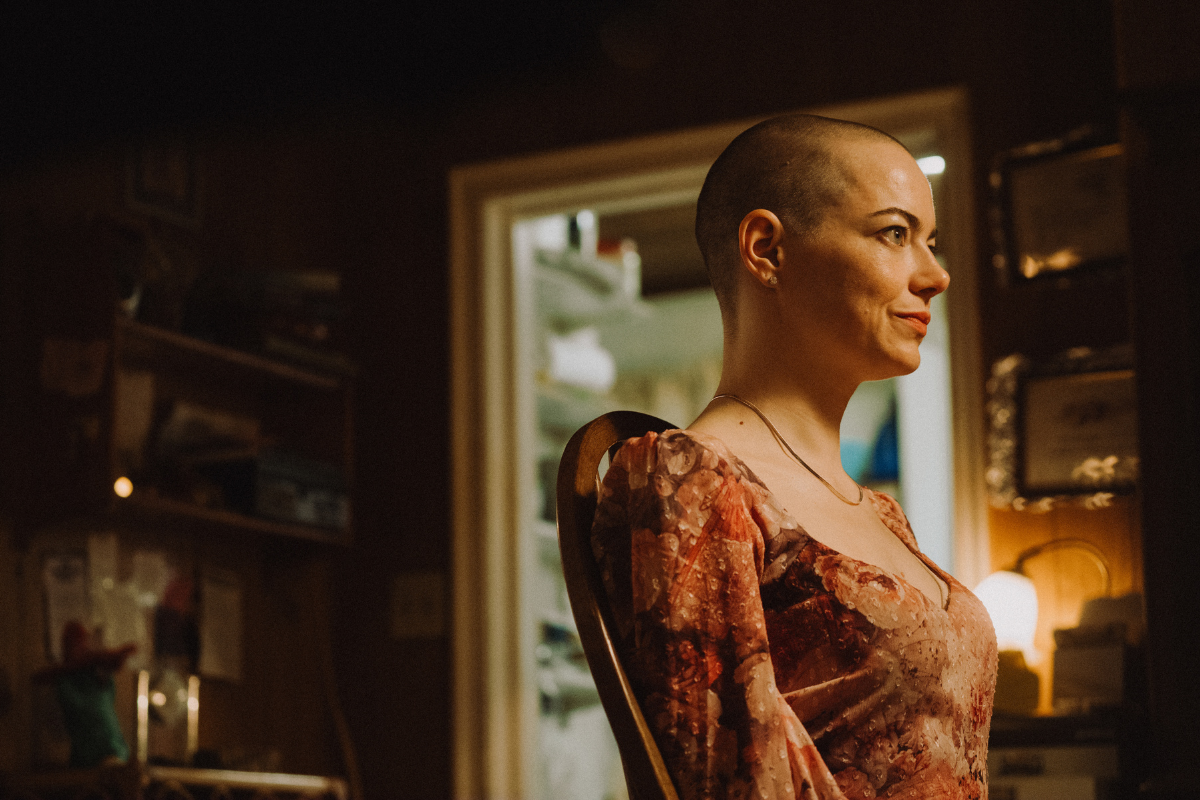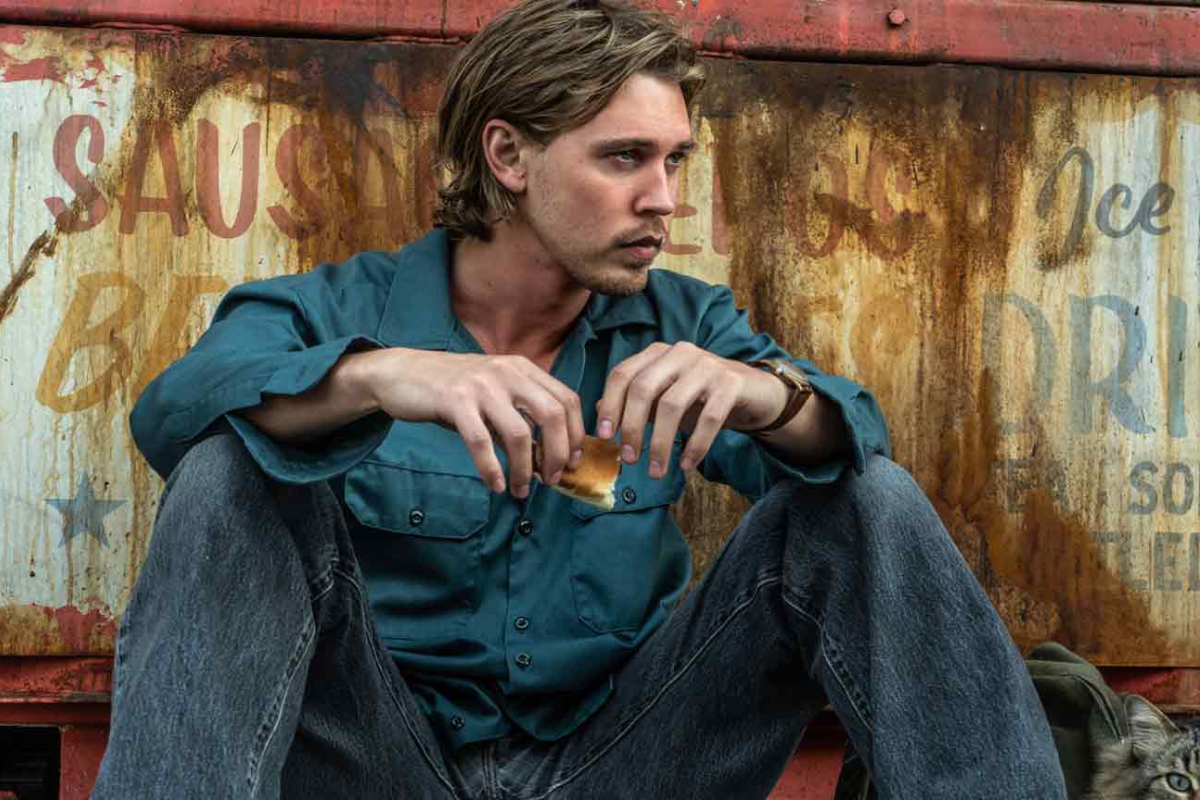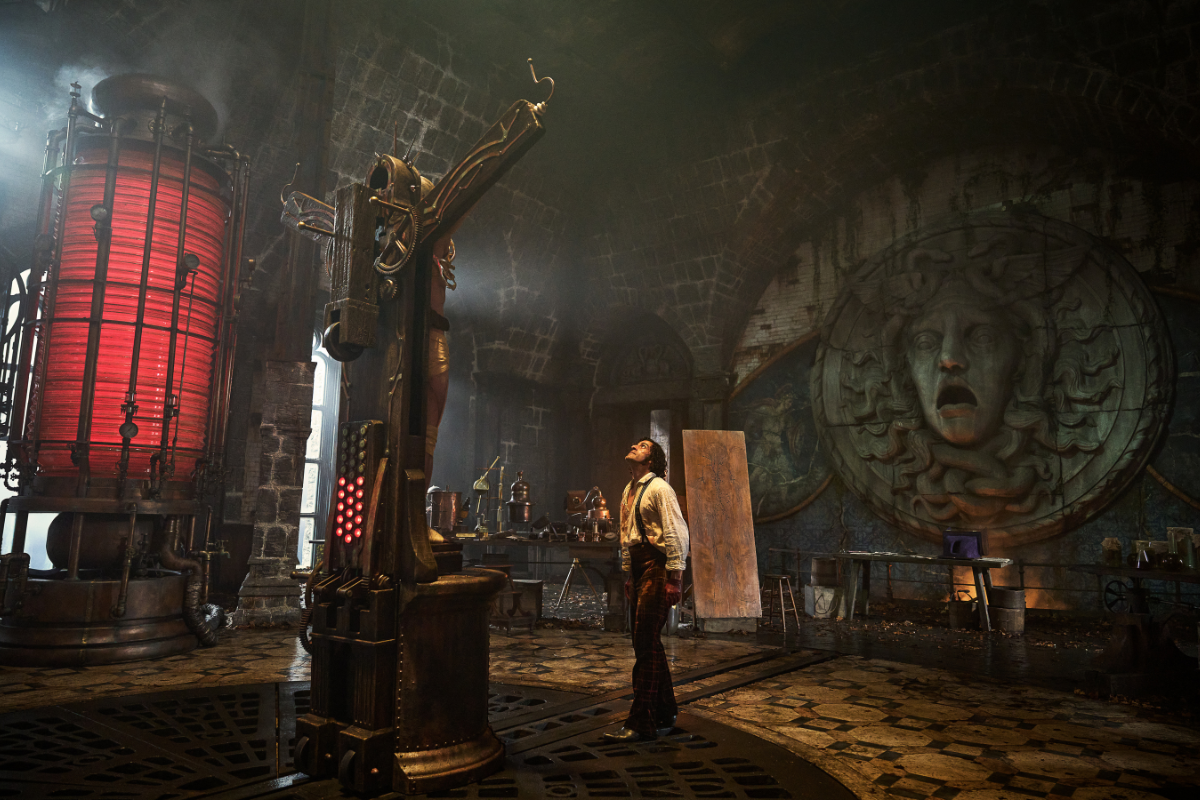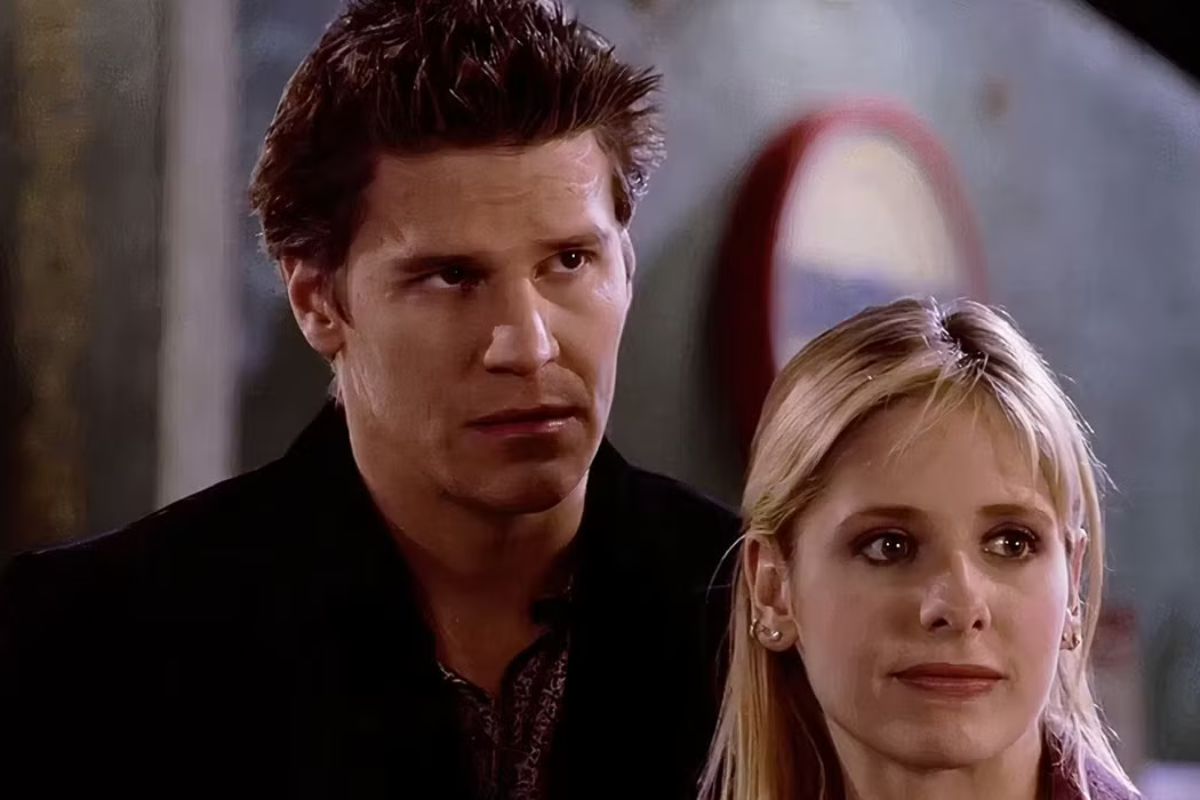THE CRAFT: To Hell With Story Structure
I know writers love to know the “rules” and “formulas” and “principles” of writing, but truthfully, there are no great truths about writing. A great writer knows the pitfalls and takes a concept and creatively considers the most compelling way to tell that story—structure be damned.
Hello, Script readers,
Let me say, first of all, that every aspiring writer should be an expert on structure, especially the three-act form. You should know the three-act backward and forward, and I don’t mean being book-smart about it, either. I don’t care how easily you can rattle off to anyone anywhere how the structure works. I’m talking about the knowledge that comes from the experience of writing many, many scripts within the three-act structure. You need enough writing experience in your life of shaping stories to fit the three-act structure, of building tension, of molding that rising climax, and of creating satisfying payoffs so that you can feel the three-act structure in your bones as you compose a story. That kind of ability never develops overnight.
I wouldn’t dare put a number on how many three-act scripts one should write before stepping onto the world’s stage, but you have to be damn good. You should write enough to know from your own experiences that you’re a thoroughly practiced expert. So much of a screenwriting career is assignment work and most of those assignments will require work in the three-act structure. You need that experience of writing a lot of three-acts so you can deliver great scripts, which is what you’re getting paid to do. As Robert McKee reminded us in his book Story, Bergman, Fellini, Godard and Altman all spent years working mainstream and mastering stories in the classical form before they ventured into alternative storytelling. There’s wisdom in that approach.
But then there comes a point in your career when you should say “to hell with structure.” Truth be told, the three-act structure is nothing less than a cheap security blanket for the most insecure industry in the world. The people of Hollywood cannot free themselves from the absurd belief that the structures of previously successful three-act films will guarantee success in future stories. While I certainly love Casablanca, I would never tell anyone that this one script should be the model for all screenplays. How ridiculous is that? Who wants to see a thousand variations of Casablanca? Each genre has its own unique set of rules and clichés. What works in one story in one genre does not necessarily work in another story in another genre. Not every compelling story out there can be so easily shoehorned into the sometimes simplistic and formulaic three-act structure.
Much magic can be had in stories that break structure, and quite often, new writers become household names when they deliver scripts that work well and break structure in ways that blow your mind. Consider how Memento put Christopher Nolan on the map or how Pulp Fiction made Quentin Tarantino famous or how Rashomon shone a light of well-deserved international acclaim onto Akira Kurosawa, one of my favorite directors. Most recently, we had the non-linear narrative approach of (500) Days of Summer, which I enjoyed, written by first-time screenwriters Scott Neustadter & Michael Weber. I recall Kelly Masterson’s debut screenplay Before the Devil Knows You’re Dead was a break in structure that impressed Sidney Lumet enough to turn into a film. An argument could be made that new writers with structurally groundbreaking work move to the front of the line.
Once you have the three-act down cold, I say play with structure but have solid reasons to do what you’re doing. I recall watching La Vie en Rose, which had a non-linear structure. We flowed seamlessly from her middle years to her childhood to her later years without much connection. The transitions were good. The individual scenes were great. The placement of the emotional highs and lows in the narrative was wonderful, and the performance by Marion Cotillard was just a tour de force. Her performance in and of itself is worth the time to watch the film. But, what about that damn structure? I recall reading a review by one of my favorite critics, James Berardinelli of Reelviews.net, who had this to say:
The film presents Piaf’s life via a broken chronology, leaping back and forth across time without apparent rhyme or reason. The movie dips into nearly every phase of her life, which lasted from 1915 until 1963, showing her in one scene as a dying woman who looks 20 years older than she is and in the next as a young girl during post-World War I France. La Vie en Rose’s blatant disregard of linear progression is similar in some ways to Todd Haynes’ approach to Bob Dylan in I’m Not There, but there’s a key difference. Olivier Dahan may choose to present Piaf’s life in a fragmented fashion, but everything is ultimately connected (and, except for the childhood scenes, there is a single actress playing the lead character). Haynes essentially made six short films and jumbled them together. The end result is more satisfying in La Vie en Rose, although there are still difficulties in becoming immersed in a storyline that jumps around so much, especially when there’s no clear purpose for presenting Piaf’s life in this fashion.
That last sentence hits the nail on the head. The reason this film sits at 75 percent on Rotten Tomatoes and failed to reach the height of greatness has to do with the fact that there was no definite reason for the non-linear structure, which was uneven at times and existed just for the sake of highlighting sections of her life. The filmmakers did this, I think, to make a story that would’ve been episodic (if told in chronological order) more dramatic. Perhaps if there had been a direct causal relationship between the different sections of her life, for example, one section with a heartbreak was the reason why, later in her life, she did X, Y and Z, the film might’ve made more sense. In the final sequence of La Vie en Rose, Edith Piaf was lying in her bed talking about her memories, how her mind is making her relive moments she didn’t want to see. I wondered if this whole film was a collection of her memories as they were flooding back to her the final night of her life, but no, that was meant just for the final sequence. A framing device like that might’ve helped, kind of like Point Blank, in the sense that the film is all of her final thoughts before she dies. (In Point Blank, Lee Marvin is double-crossed and the entire film is what takes place in his mind moments before his death as he imagines taking revenge on his betrayers. Great film.)
So, what are some successful breaks in structure?
Alfred Hitchcock was notorious for breaking structure. Many of us think back on the Psycho shower scene as being shocking by the fact that there was this surprising, scary, brutal murder that took place in the shower. However, we forget that so much of the shock in that moment sprung from the fact that Hitchcock was killing off his protagonist. We were following this woman and getting involved in the drama of her life and then—eek-eek-eek!—she’s dead. Gone. Hitch totally pulled the rug out from underneath us and we were suddenly lost, narratively speaking, by her death. Who do we follow now? Where does the story go? We’re all alone in this motel with this crazy killer! Has there ever been a screenwriting guru suggesting that great horror films should follow Hitch’s model of Psycho by killing off the protagonist halfway into the film? Who says you can’t kill off your protagonist? A good, long study of Hitchcock reveals many, many interesting breaks in structure.
I’d like to talk about Irreversible. I cannot in good conscience recommend this film. It opens with angry men on the hunt to take revenge on another man, and we’re witnesses to a tragedy that is so realistic and so brutal, it is one of the few times I had to close my eyes while watching a film. It made me ill, to be honest. But then we move backward in time and we’re made to see the reason for their anger, which was the rape of Alex, played by Monica Bellucci, in one of the longest, most brutal rapes scenes ever portrayed on film. This, too, made me ill. However, during the seemingly unendurable time it takes to get through this scene, we realize that the angry men who sought revenge in the opening scenes killed the wrong man, and the tragedy of what happened sinks in. Then, by continuing the story in reverse, the structure places a strong emphasis on all the decisions that led up to the tragedy. We’re forced to contemplate all the little mistakes along the way because this rape could’ve been avoided. If only he treated her better and wasn’t such an ass! If only he cared more and took her home! The structure also forces us to appreciate the good moments in life, as we saw in the loving ending.
Chicago Sun-Times’ Roger Ebert made a fantastic point in his review:
The fact is, the reverse chronology makes Irreversible a film that structurally argues against rape and violence, while ordinary chronology would lead us down a seductive narrative path toward a shocking, exploitative payoff. By placing the ugliness at the beginning, Gaspar Noé forces us to think seriously about the sexual violence involved. The movie does not end with rape as its climax and send us out of the theater as if something had been communicated. It starts with it, and asks us to sit there for another hour and process our thoughts. It is therefore moral—at a structural level.
Ebert’s review held an astonishing discovery for me. He explores the idea of a reverse structure creating a moral emphasis. The structure makes us contemplate the choices before the tragedy in a way we would never think about them if the story were told in chronological order. This film truly is written with a moral structure in mind.
How about Sex and Lucia? I went to see this movie for the structure. Yes, it’s true. I know what you’re thinking: “And you’ll probably tell me you got Playboy for the articles, too.” No, I only wanted to see the pictures. If I wanted good articles, I’d get Esquire or Script. But, yes, the sex was nice in this film, as was Lucia, played by the very pretty Paz Vega. But, here’s the thing. The film starts with the beginning, followed by the ending, and then ends in the middle. Imagine that! Without getting too deep into the story, the filmmaker presented a conflict, gave us a tragic ending as imagined by the writer living with Lucia as he was writing his book, and then ended it in the middle where the characters were given the opportunity to choose. Nobody got it. Maybe people were too distracted by the sex and nudity to notice the story. I admit, the structure excited me, as did Paz Vega and Elena Anaya.
So many films could be discussed, volumes even, but let me close with my favorite break in structure—Ikiru, a masterpiece by Akira Kurosawa. This film completely broke my heart. This is the story of a man who worked in Public Affairs for the government in postwar Japan and he learns that he has terminal cancer. He realizes he squandered his life on meaningless red tape. He has no close family or friendships to lean on. He resolves to use his remaining time to build a children’s playground on a piece of land that had become toxic to a neighborhood, and he battles the government bureaucracy to get it done.
An hour and a half into the film, Kanji Watanabe chooses to build this playground. In the very next scene, he’s dead. We’re at a Japanese-style memorial service. About a dozen men are in a room and at the end is Watanabe’s photo surrounded by flowers and candles. We learn that the park has been built. The men debate if Watanabe’s really to be praised for creating this park, because the Park Department actually built the park. And, as all the men debate these issues, we discover through flashbacks just how Watanabe did it.
"The structure makes us contemplate the choices before the tragedy in a way we would never think about them if the story were told in chronological order."
This is a very unusual structure, but it works because it helps Kurosawa jump right to the good parts of a storyline that would’ve been too complicated and difficult to tell in a linear fashion. By changing the perspective, by showing these events through the eyes of his coworkers and family, Kurosawa actually creates depth that he could not in a straight narrative. It also helped him to rise above cliché and sentimentality to create a genuinely moving masterpiece of cinema.
The fact that Kurosawa took Watanabe away from us so suddenly makes us want to see Watanabe that much more, which sets up the very moving ending, which I will not reveal. However, this break in structure turns everything into a sort of mystery. We first wonder if Watanabe built the park. We wonder how he died. We wonder if he was happy or if the death was a suicide. And so Kurosawa shows us in this funeral scene how Watanabe’s accomplishments impacted the lives of those who knew him. This scene is broken up by flashbacks that revealed how Watanabe ultimately got the park built. The flashbacks existed not to advance plot so much as to make us FEEL. We are moved by Watanabe’s dogged determination and willpower and strength of character that got the job of building that park done. We are moved by his overly polite, super-subservient, and hyperdeferential interaction with others in government, which was done in long takes so that we could FEEL the power of his will. As we watch these men at Watanabe’s funeral try to take credit and debate his efforts, we mentally urge them to think differently and understand the point and purpose of Watanabe’s gift to the children. In this respect, the break in structure enabled Kurosawa to make us not only witnesses to Watanabe’s journey, but also be evangelists for change. That, my friends, is the great power and glory of storytelling.
I know writers love to know the “rules” and “formulas” and “principles” of writing, but truthfully, there are no great truths about writing. A great writer knows the pitfalls and takes a concept and creatively considers the most compelling way to tell that story—structure be damned.
Originally published in Script magazine May/June 2010
Get tips on story structure with Diane Drake's on-demand webinar
The Essential Elements of Screenplay Structure: Get Your Story Straight


